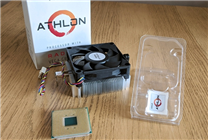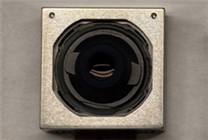AMD ROCm 6.4.4 Release: Revolutionizing PyTorch for RX 90/70 on Windows
Summary:
- AMD has released the ROCm 6.4.4 preview, featuring PyTorch support for its latest Radeon RX 9000 and RX 7000 graphics cards, as well as Ryzen AI series APUs.
- This advancement aligns with AMD’s commitment to create a developer-centric environment across both Windows and Linux platforms.
- The ROCm ecosystem aims to empower developers with tools and support comparable to NVIDIA’s CUDA framework.
On September 25, AMD made a significant announcement at the 2025 Computex Conference, fulfilling its promise to bring PyTorch support to Windows systems through the ROCm (Radeon Open Compute) platform. The release of ROCm 6.4.4 marks a pivotal moment for developers utilizing AMD’s hardware in artificial intelligence and machine learning applications.
What is ROCm?
ROCm is an open-source GPU computing ecosystem developed by AMD, designed to offer an effective development environment akin to NVIDIA’s CUDA. With this latest update, AMD’s commitment to cross-platform development has taken a notable leap forward. ROCm 6.4.4 provides PyTorch support specifically for the Radeon RX 9000 and RX 7000 series graphics cards, as well as the Ryzen AI 300 and Ryzen AI MAX series Accelerated Processing Units (APUs).
Hardware Compatibility and Features
The ROCm 6.4.4 update enhances support for a range of hardware including:
- Radeon RX 9000 Series: Featuring the RDNA 4 architecture.
- Radeon RX 7000 Series: Based on the RDNA 3 architecture.
- Ryzen AI APUs: Including both the Ryzen AI 300 "Strix" and the Ryzen AI MAX "Strix Halo" series.
This release means developers can now seamlessly run AI models directly on their AMD hardware within a Windows environment, expanding the capabilities of the ROCm ecosystem.
AMD’s Vision
In a statement, AMD emphasized its dedication to creating a developer-centric environment: “At Computex 2025, we promised to build ROCm into a truly cross-platform, developer-centric development environment. Today, we have taken an important step by enabling PyTorch support on Windows and Linux for AMD Radeon 7000 and 9000 series graphics cards and Ryzen AI 300 and Ryzen AI MAX series APUs.”
This commitment indicates that AMD not only seeks to enhance its software capabilities but is also investing in the productivity and innovation of its hardware offerings, particularly in enterprise-level applications with the recent release of ROCm 7, which further accelerates AI advancements based on Instinct and EPYC hardware.
Conclusion
The introduction of ROCm 6.4.4 is an important milestone in AMD’s ongoing competition with NVIDIA in the GPU space, especially in areas like machine learning and AI. By enabling PyTorch on Windows for its new and powerful hardware, AMD is opening new avenues for developers and researchers alike.
As developers continue to adopt and integrate AMD’s ROCm ecosystem into their workflows, we can anticipate a broader range of applications and innovations that will enhance productivity and drive forward the future of computing technologies.
This significant development underscores the rapidly evolving landscape of GPU computing and highlights AMD’s urgent push to remain competitive. As the technology matures, we expect more enhancements and features that will foster a vibrant community around AMD’s ROCm platform.






